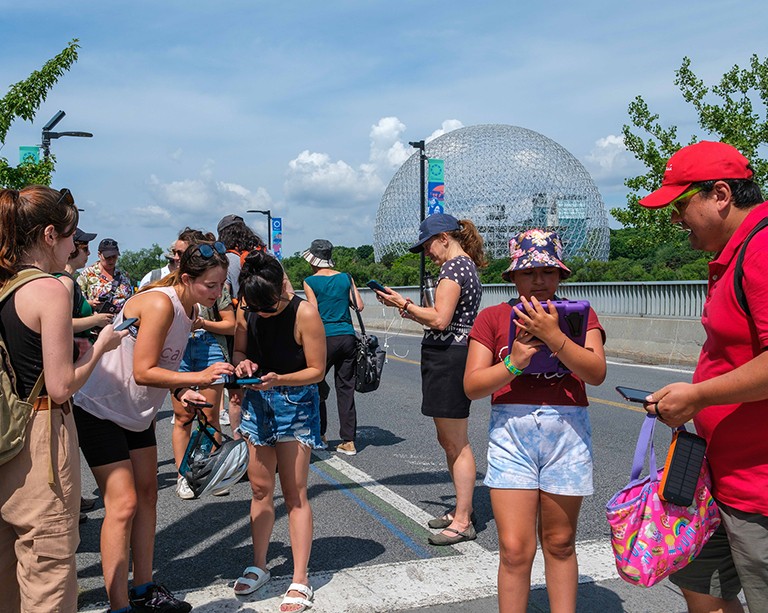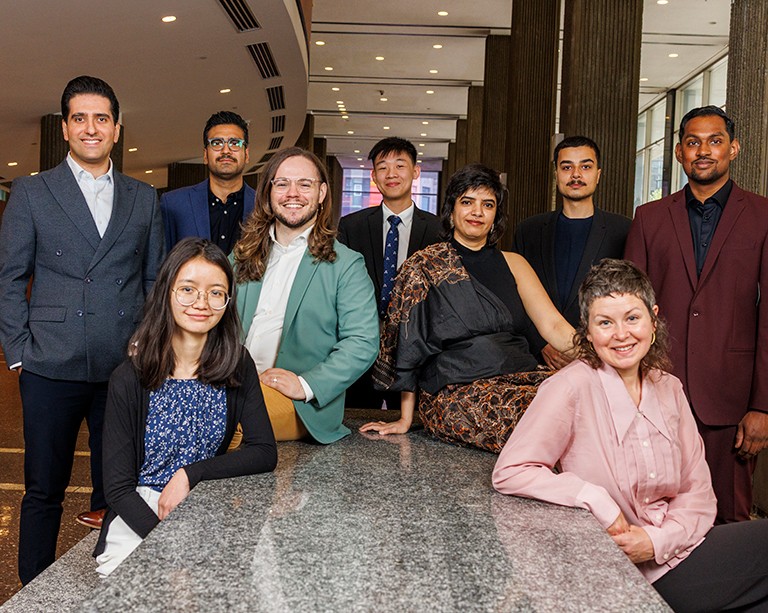Four artists shortlisted for Concordia’s inaugural Honouring Black Presence public art call for submissions
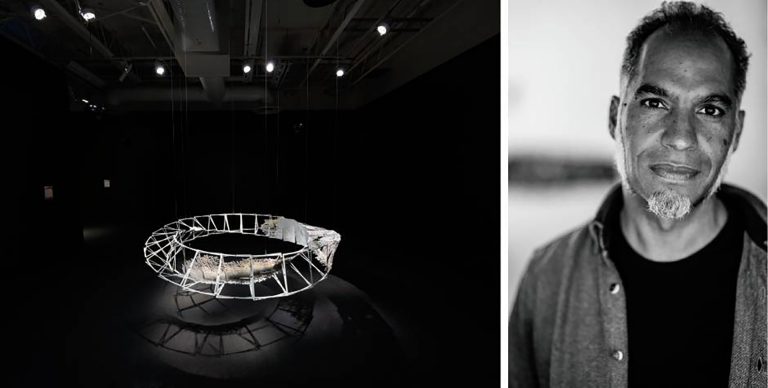
JANUARY 24 UPDATE: Charmaine Lurch and Anna Jane McIntyre have withdrawn from the competition.
A new public art program will celebrate the histories, presence and futures of Black Concordians through ephemeral public artworks. Honouring Black Presence at Concordia is one of many concrete actions meant to respond to the final recommendations of the President’s Task Force on Anti-Black Racism.
The call for submissions sought work from Black artists with a connection to Concordia or Montreal’s Black communities.
“We need to continuously examine the structures and practices that compromise Black flourishing at Concordia. This is just the beginning of what will be an ongoing process of addressing the specific experiences of Black Concordians,” says Anne Whitelaw, Concordia’s provost and vice-president, academic.
“If we are to enact real change at the university — from the inside out — then we need to be accountable. Our commitment needs to be unwavering and measurable.”
Raising funds toward a ‘tangible marker of Black presence’
The program will be funded by donations from Concordians and the public. These essential fundraising efforts will help compensate artists for their labour and cover the costs associated with realizing such an ambitious undertaking.
“The program responds to a longstanding demand to establish sites of Black presence at the university,” explains Cynthia Alphonse, project coordinator for the President’s Task Force on Anti-Black Racism. “Supporting this initiative is one of the ways the university community can help celebrate and honour the contributions of Black peoples to Concordia.”
Alphonse notes that Black people were carving out a space for themselves at Concordia long before it became the university we know today. These individuals and communities forged a path for future students, staff and faculty.
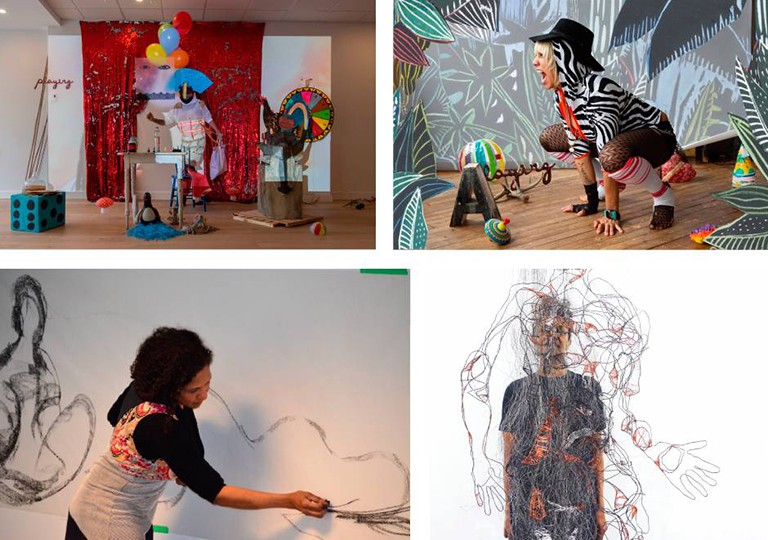 Top: Anna Jane McIntyre and her performance pieces “Context is everything” (2021) and Aa is for “Afropresentism.” Bottom: Charmaine Lurch and her piece “Sycorax Scene II,” 2020. | Photos: Top left photo by alignements; top right photo by Kinga Michalska; bottom left photo by Vero Diaz; bottom right photo by Hannah Zbitnew.
Top: Anna Jane McIntyre and her performance pieces “Context is everything” (2021) and Aa is for “Afropresentism.” Bottom: Charmaine Lurch and her piece “Sycorax Scene II,” 2020. | Photos: Top left photo by alignements; top right photo by Kinga Michalska; bottom left photo by Vero Diaz; bottom right photo by Hannah Zbitnew.
‘Blackness is not a monolith; Blackness is not a moment’
The program will provide several opportunities for public art with a new competition being held every three years.
This first Canada-wide call for Black artists resulted in 21 submissions, three of which have now been shortlisted.
“Because artists from Black communities are underrepresented in Concordia’s and Montreal’s public art collections, we left the parameters of the call as open as possible. And, we provided a choice of locations to entice a diversity of artists and artistic practices,” explains Sandra Margolian, public art lead at Concordia.
Margolian adds that the artworks’ impermanence is key. “We wanted to give the flexibility to experiment with new technologies and materials.”
For Alphonse, flexibility and abundance are integral values to the project. She says it was important that artists find ways to depict different aspects of Black experience but also highlight a continued presence and contribution from Black communities.
“Blackness is not a monolith. It would have been really hard to have just one piece of art to represent the totality of Blackness,” Alphonse says.
“We want to give exposure to as many artists as we can. Blackness is not a moment.”
Black histories at Concordia
As finalist Charles Campbell, BFA 92, shares, representation matters. While he says his experience at Concordia open his eyes to contemporary art’s possibilities, his undergraduate studies were isolating at times. Campbell was one of a handful of Black visual arts students. At the time, only one Black professor taught in the department.
“Nobody spoke of the history of Black activism or occupation of Sir George Williams. Like so many Black histories, it was being erased,” he explains.
The Sir George Williams Affair, otherwise known as the Computer Centre Protest, is central to the work of Charmaine Lurch. Lurch is one half of the shortlist’s only team submission.
For years, she has researched, responded to and presented internationally on the topic. She even acted as a workshop facilitator as part of Concordia’s Protests & Pedagogy event series and conference, marking the 50th anniversary of the incident.
Lurch’s teammate, Anna Jane McIntyre, MFA 10, is a graduate of Concordia’s Studio Art program. McIntyre describes her practice as one that combines arts and micro-activism to explore the many ways people decipher experience, create belonging, maintain culture and sense of self.
The duo say they are dedicated to supporting “joyous and celebratory Black community building in Canada.”
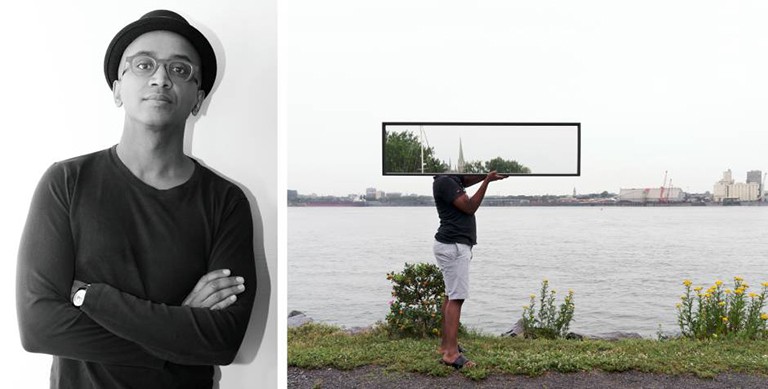 Dawit L. Petros and his piece “Untitled (Epilogue VIII), Longueuil, Quebec,” 2021. Impression au jet d’encre / Archival pigment print, 2021. | Photos by Dawit L. Petros
Dawit L. Petros and his piece “Untitled (Epilogue VIII), Longueuil, Quebec,” 2021. Impression au jet d’encre / Archival pigment print, 2021. | Photos by Dawit L. Petros
Space enough to breathe
Dawit L. Petros’s work bridges the fields of art, design, architecture and history. His work interrogates how legacies of colonialism are enmeshed in current events.
Petros’s art positions images within audiovisual installations of film, sound and sculpture. He says he seeks to generate encounters that are “nuanced, durational and inflected by multiple frequencies.”
“My central mode of investigation is photographs, whose formal language is sometimes poetic, abstract; sometimes representational; and frequently both.”
Campbell’s most recent work also wrestles with current events. His artistic practice is concerned with breath — Black breath in particular.
“It’s a response to the politically vital and gut wrenchingly difficult summer of 2020,” he says.
“Each breath not only embodies our present state but also holds the memory of our every experience. It pulls us into a deeper past, carrying us into the realm of our ancestors and linking us with the first cells that had the audacity to convert sunlight and CO2 into oxygen and food,” Campbell explains.
“I am looking for an antidote to the instrumentalization of Black bodies and the usual routes of validation: achievement, excellence, suffering, resilience. Can we have a space where it is enough just to breathe?”
All the artists say they are deeply honoured to have been shortlisted. They also praised the university’s move to acknowledge Black histories and to follow through on recommendations from the Task Force. However, as Campbell notes, there is still work to be done.
“In a perfect world we’d be collaborating, not competing.”
Before spring, when the judges are set to evaluate the works, each proposal will go through a technical review. This process will ensure that the artists meet safety standards and work within space and budget constraints.
Cherry Marshall, BA 06, MA 10, associate vice president of development, says those who wish to celebrate the foundational work and contributions of Black communities and students to the university can do so by donating to Honouring Black Presence at Concordia initiative.
“Whether $5 or $500, each donation will translate into fostering a greater sense of belonging on campus for Black students, faculty and staff,” she reports. “In addition to providing an opportunity to engage with incredible art, the program seeks to support healthy identity and positive development, especially for students.”
The fully developed installation will be unveiled next year. The event is slated to coincide with Concordia’s 50th anniversary in 2024-25.
Find out more about the President’s Task Force on Anti-Black Racism at Concordia.
Find out more about the Honouring Black Presence Public Art Program.
